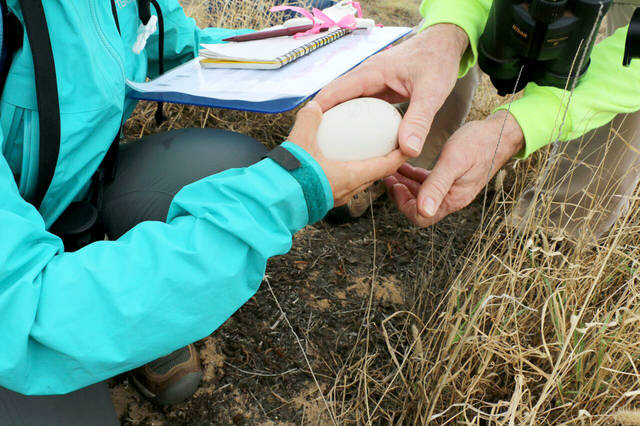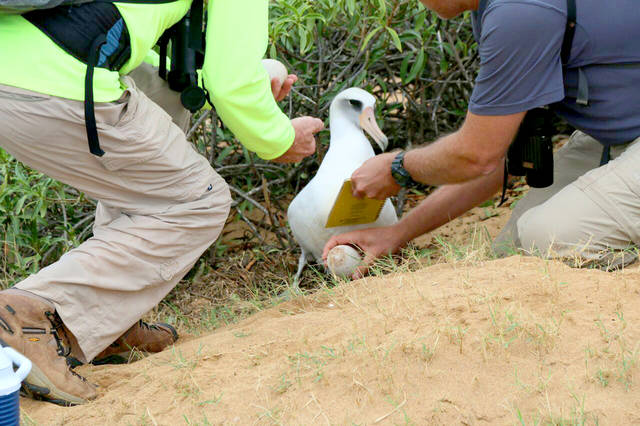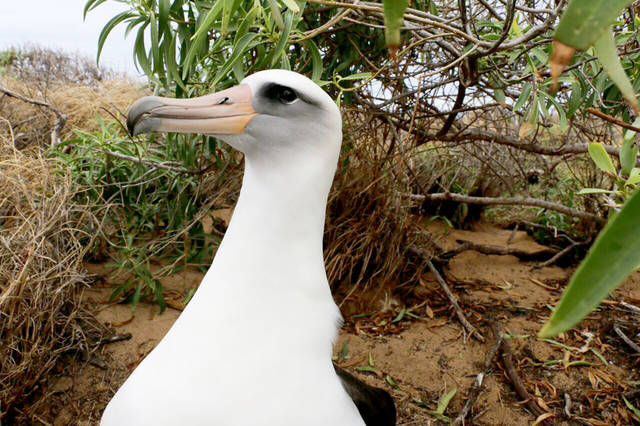KEKAHA — An active airstrip at Kauai’s Pacific Missile Range Facility poses problems for the albatross colony that is returning to the island for nesting season, and that has been the spark for many relocations of albatross eggs from the base.
Over the past 12 years, officials estimate 600 Laysan Albatross eggs have been relocated from the missile range, and some of those eggs have found homes on private Kauai properties. Last year 48 eggs were relocated throughout the entire nesting season.
While some of those eggs are relocated to somewhere else on The Garden Island, many of them go to the Ka’ena Point albatross colony on Oahu, where surrogate parents raise them as their own.
In December 2017, 21 new eggs made their way to Ka’ena Point and are expected to start hatching in February, with the young chicks fledging about five months after hatching.
“This really is a win-win situation for the albatross here and for the Navy,” said Eric Vanderwerf, director of science with Pacific Rim Conservation, which partnered with PMRF staff members on the project.
He continued: “The Navy’s long-term goal is to reduce the number of albatross where they’re an airstrike hazard. And the Ka’ena Point colony suffered a setback a couple of years ago because of human vandalism, so this will give a little boost to this colony and get it back to the path where it would have been headed anyway.”
Team members worked together to check eggs for the presence of live embryos, since there’s always a certain percentage of the eggs the birds lay which are infertile.
At Ka’ena Point, team members identified the albatross pairs that were incubating one of those infertile eggs, which the birds will do for at least the 60-day gestation period, even if there isn’t a chick inside. After identifying those birds, their infertile eggs were replaced with the fertile eggs from the PMRF colony.
“By translocating eggs to more appropriate nesting areas, eventually the colony will presumably be fully ensconced elsewhere,” said a press release from the state’s Department of Land and Natural Resources. “The team would like to see the creation of additional foster nest locations on Kauai, so eggs removed from PMRF can remain on the island.”
The island-to-island transfer isn’t the first, but it is the largest number of eggs relocated in one shot, according to officials.




